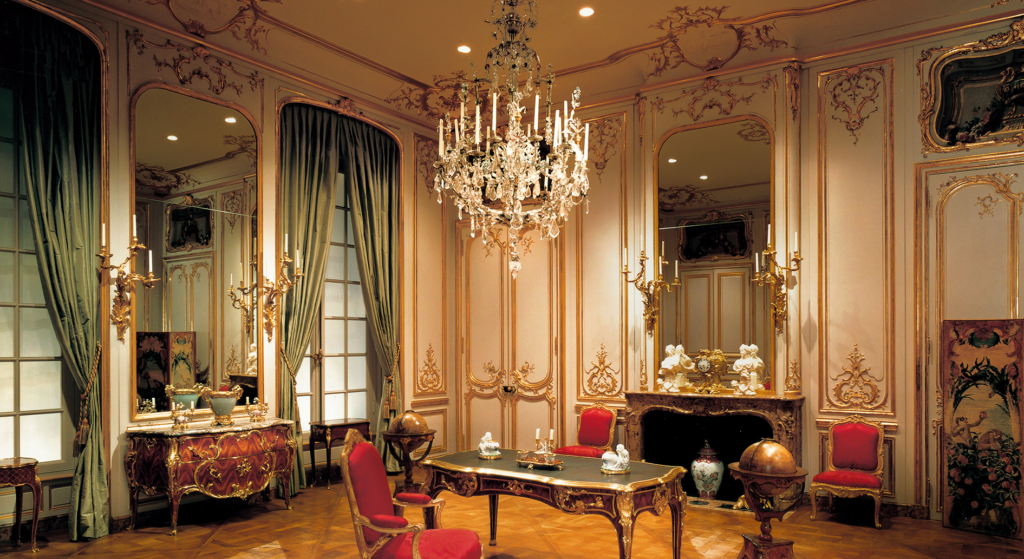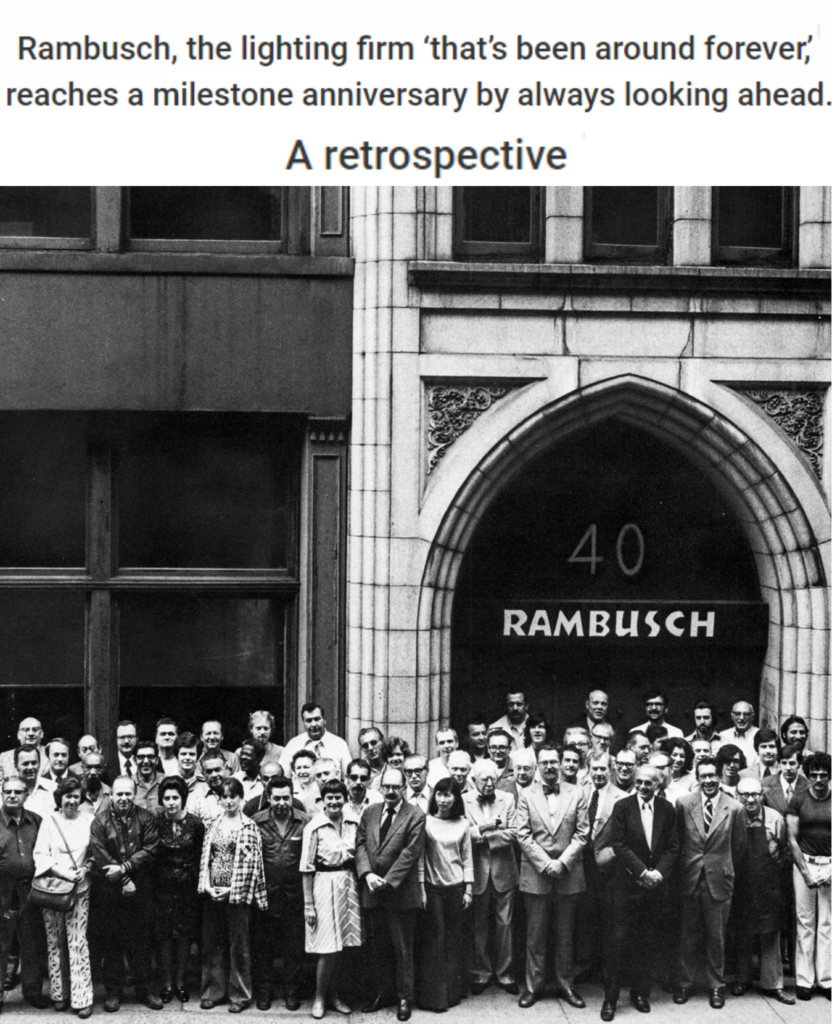Almost everyone in the lighting business is aware of Rambusch’s specification-grade lighting products. Lesser known, perhaps, are its accomplishments as a restorer of historic fixtures for specific projects, and its talent in replicating fixtures and custom lighting. Glare inspired Rambusch’s entrée into the lighting business. The firm was founded as a decorating company and its founder, Frode Rambusch—whose great-grandsons Edwin and Martin Rambusch run the company today—found the murals he had painted in churches could not be seen because of the bright, bare lightbulbs that had been hung in front of them. As a result, the firm began making devices to shield the light and bounce it where it was needed. Some were wall-mounted high above the floor, made of ornamental copper that shielded light from congregants’ eyes, while concealing reflectors aimed toward the sanctuary. The firm also began producing an entire line of standard lanterns and pendants for churches.
Glare returned as a problem as light sources became more powerful during the 1920s and 1930s. To address the problem in the early ‘30s, the firm begin experimenting with putting light sources above the ceiling plane. As a result, in 1938 Rambusch was awarded the first patent for the downlight. A reading of the eight-page document reveals a sophisticated invention, composed of an ellipsoidal reflector of specular material, to focus light downward through an aperture, and dark, scalloped-metal baffle plates between the ceiling level and reflector to prevent visual hotspots. It could be tilted for relamping from an attic space and had integral electrical boxes. It had a means of adjusting the focal point of the lamp to change its beam spread. The trademarked name of this device, the Downlite, is one of the most widely copied lighting products of all times.
Today, work at Rambusch’s Jersey City lighting workshop is split between building specification fixtures, as well as restoration and custom lighting work. It remains true to its roots as a craft shop where a tremendous amount of custom work—casting, polishing, brazing, painting and wiring—is still done by hand. Its ability to continually evolve its lighting offerings is possible because the firm’s artisans pass metal fabrication techniques, expertise and trade secrets from one generation of workers to the next. Many employees work in its shops for decades, and nimbly move between building its specification fixtures and custom work, depending on demand. Likewise, some designers stay with the firm for decades. They still make beautiful pencil and ink renderings of custom work that are sometimes also used for fabrication. Some of these scale drawings can be several feet tall, if required. As a company philosophy, designers will always work in whatever style might be required for a given job.
What follows are four notable projects from Rambusch’s hundreds of custom lighting and restoration jobs that demonstrate the scope of its expertise.
Chrysler Building: Wall Sconce Retrofit and Restoration | New York City
In collaboration with Kugler Ning Lighting, Rambusch’s work for the Chrysler Building lobby in 2018 reveals the full glory of the landmark’s painted ceiling by Edward Turnbull. The company developed extremely compact LED uplight retrofits, which fit seamlessly into the existing shrouds. The luminaires did not require that the sconces be removed to be refitted; all that was necessary was a change-out of the internal elements. The uplights enliven the polished walls made of Siena marble and onyx without the deleterious effects of heat. The uplights are hidden amidst the urns and can be aimed in three axes of rotation to optimize the illumination of the massive mural. Every refitted sconce is individually controlled via Bluetooth technology, and the lighting components are cooled with a proprietary system which allows everything to fit within the crowded fixture space. The scene controls automatically change the light output during closing hours; the full transition takes nearly five minutes to complete.

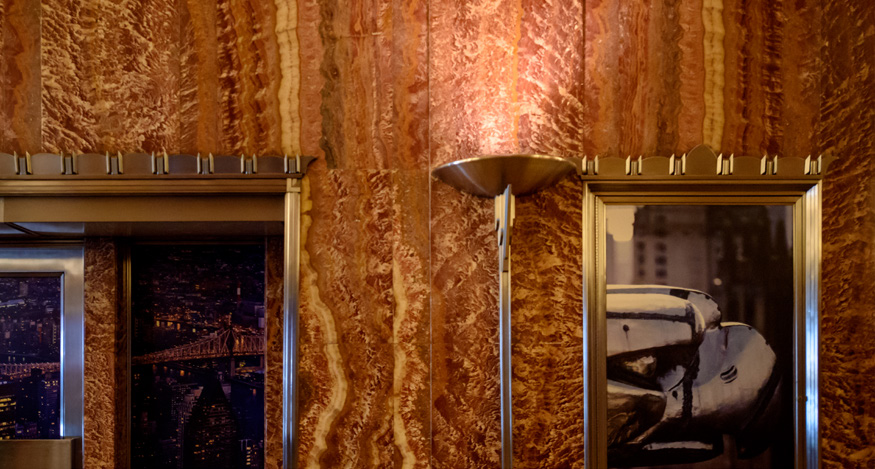
Trinity Church Wall Street | New York City
The level of meticulous detailing required by the $112 million renovation of Trinity Church Wall Street (2019-2020) demanded experts for the restoration of its lighting and creation of new, historically appropriate fixtures. Some historic fixtures were restored based on a conservator’s recommendations and fitted with LEDs. New lanterns for the nave and side aisles were created from brass and provide multiple layers of light. For example, lamps that are concealed in canisters on suspension cables hide lamps that light the ceilings. Spots that point downward from the bottom of the lanterns illuminate the pews and floor.
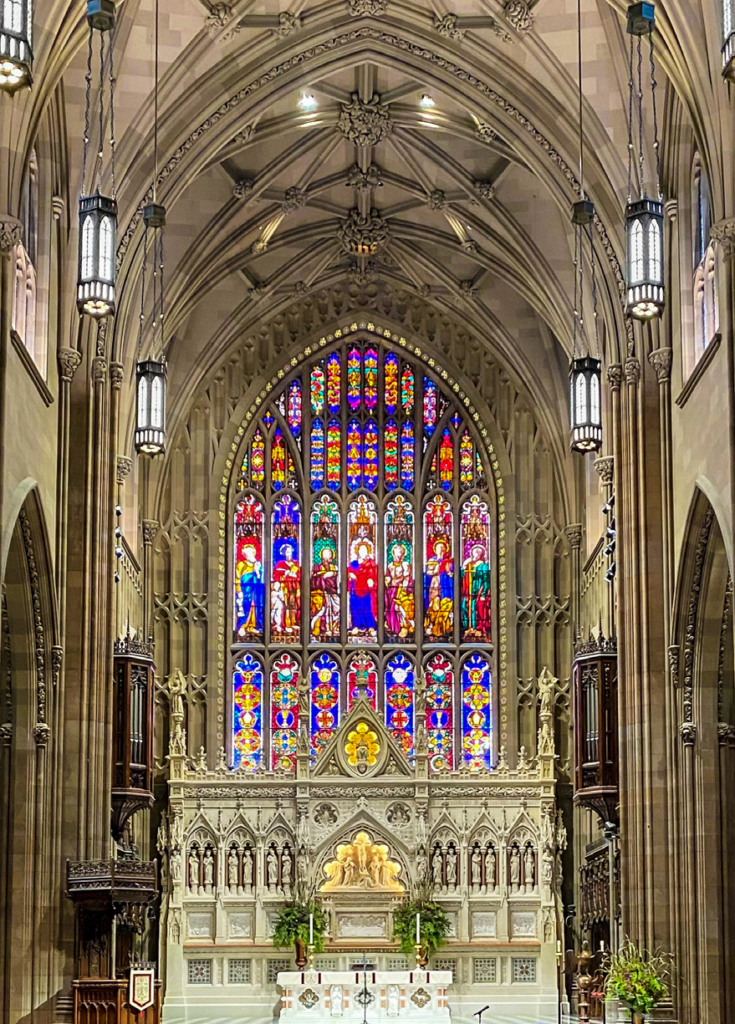
Utah State Capitol | Salt Lake City
As part of a major restoration of the Utah State Capitol, Rambusch restored the building’s historic lighting (design by Randy Burkett Lighting Design). In all, 450 fixtures went to Jersey City for restoration and repair, including the chandelier that hangs in the Capitol’s rotunda. Forty-six families of fixtures were re-created from harvested or duplicated parts in this project. To do this, molds were made of the original components and used to make new bronze castings. The resulting inventory of new parts assured the continuity of design throughout the interior, while reducing costs through economies of scale. A separate medallion featuring a beehive, Utah’s state symbol, was incorporated onto multiple pendant fixtures. Various finishes included seven layers of hand-rubbed, burnt-umber glaze. The project took five years (2004-2009), and 1,400 fixtures were handled by the firm.
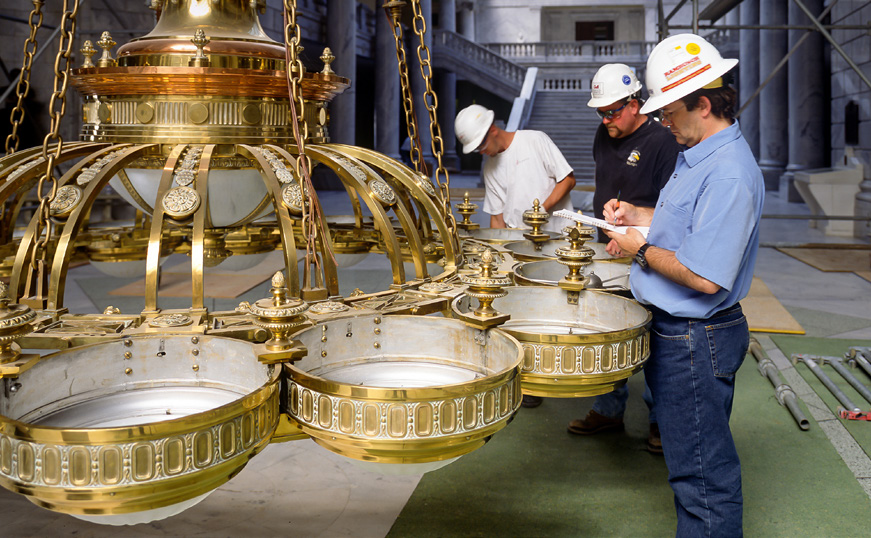
Arts Wing | Los Angeles
Rambusch is sometimes asked by designers to develop new kinds of fixture designs. While designing the lighting for 14 rooms of period European furniture for the J. Paul Getty Museum’s Decorative Arts Wing, the late Howard Brandston asked the company for a new downlight. His task was to lull visitors back in time by presenting environments lit as they might have been centuries ago. Yet, a trick of the eye was needed to make ambient illumination appear to be coming from candles, while doing what only modern illumination can do: enrich the visual experience by bringing focus to specific objects, emphasizing their finishes and three-dimensional shapes. Working with Brandston on a full-scale mock-up, Rambusch created new a luminaire with a reflector design that is fully adjustable: it can wash walls with light, accent specific pieces of art or provide downlighting. Fewer luminaires are needed than is typical for museum displays, and with dimmers extending lamp life and helping create the look of candlelight, maintenance and savings in power costs are substantial.
